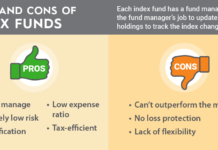Anything finance-related can be a taxing subject for most individuals, especially when it involves investments and taxes. Every financial advisor you come across will advise you to start investing as early as possible. But how do you do it? Where do you even begin? An investment 101 lesson is necessary for anyone who wants to start investing. Below is a beginner’s guide to help you start the investing journey;
What’s Investing?
While investing and saving are closely linked, they are totally different. Saving is the act of putting money aside for a rainy day, vacations, education, a house or for purchase of major household items. Investing, on the other hand, involves putting money in a financial product that earns you a return or profit.
Choose Your Asset Class
The first step to start investing your money is knowing what asset classes align with your risk tolerance, financial goals, the market, and your investment skills. Asset classes are a group of financial products with the same financial characteristics and behavior in the market. An asset class could be high risk, like futures, options, and stocks, or low risk, like government bonds and CDs (Certificates of Deposit).
Every investment has its rewards and risks. Usually, the higher the rewards or returns, the higher the risk. You need to have a high-risk tolerance for investing in such. For individuals who don’t want to take high risks with their money, low-risk investment vehicles like government bonds are the best investments for you. However, it’s good to note that they will also have lower returns.
Ownership Type
You will also need to think about the type of ownership you want for your asset classes. Below are the common types of ownerships;
Ownership Investments
Ownership investments let you own the asset. These range from stocks to real estate, business, and precious objects like art collectibles are metals. Stocks give you a stake in the company so you can share in its profits and losses. Real estate investment can earn you returns through rental income or capital gains when you sell the property.
While precious objects are pricey, they are only considered as investments if you will sell them for a profit. An artistic painting that sits on your wall for more than 5 years, just for decoration is not an investment. But, if you see it for say, $500 extra, then it’s an investment. The same applies to precious metals and fine jewelry pieces.
Lending Investments
Lending investments involves you lending your money to a business, government, or an individual with the hope of getting paid back your principal amount plus interest. Lending investments are usually low risk compared to others but also have lower returns. These are the best for anyone who is risk-averse. Some of the lending investments to consider are bonds, treasury bills (T-Bills), and certificates of Deposit.
Bonds can be government or corporate bonds, with corporate bonds being riskier. You lend money to the corporates or the government with the expectation of receiving fixed interest for a specified period. Upon maturity of the bond, you will receive your initial amount, i.e., the principal amount. Bonds are usually long term, with some having a maturity of a period of 10 years or longer. However, you do not have to wait for the maturity time. You can sell the bonds through the secondary market.
Treasury bills are short term investments with a maturity period of less than 1 year. They are issued by a country’s government and are considered very secure. Unlike other investments that earn you regular returns in terms of interest, T-bills don’t. The government sells T-bills at a discount from the face or par value, meaning the buying price is lower than its face value. For example, if the face value of $1,000, you might pay $900 for the T-bill. Upon maturity, the government will pay you the face value, i.e., $1,000. If the face or par value is higher than your buying, in our example that’s $100 more, that’s your interest.
Banks and credit unions mostly issue certificates of Deposit. An investor agrees to bank a lump sum amount of money in an account and leaves it untouched for a specified period. The interest rates for CDs vary from one institution to the other, but they are always higher than what you earn in a savings account.
Cash and Equivalents
These are short term investments with high liquidity, low returns, and are considered as cash. They include money market funds and savings accounts.
Investment Rules to Remember
- The higher the return you want, the higher the risk you should be willing to take.
- Diversify your portfolio. Remember the old rule of not putting all your eggs in one basket? It’s one of the best rules to apply in your investments. Diversifying your portfolio reduces your risk exposure. You can do this by buying stocks for companies in different industries, and having different asset classes in your investment portfolio.
- Always have an emergency fund in a savings accounts where it’s highly accessible but earns some interest. The golden rule is to have at least 3 to 6 months of your monthly expenses in an emergency fund to cover you during a rainy day, like losing your source of income. An emergency fund ensures you are always covered during an emergency, and your first instinct is not to sell your investments for survival.
- Keep reviewing your portfolio regularly to see what’s performing and what is doing well as expected. If there is an asset class that has not been performing for long, you can remove or reduce its allocation, and increase the allocation on an asset class that’s performing.
- Don’t invest in what you don’t understand. Take your time and research in the investment you want to do. You need to understand its risks, returns, and market trends. If you are buying a company’s stocks, go through their financials and see how much dividends they have paid for the last 5 to 10 years and whether the company is healthy financially.
The bottom line is that you need to take a few classes, consider it your investment 101 guide. You cannot survive in any investment environment if you don’t understand yourself, your financial needs and goals, as well as the market. Assess your willingness to take risks, what returns you want, and how long you want to invest. It will make it much easier to narrow down to the asset classes that meet your needs. And, always remember to diversify your investments.












